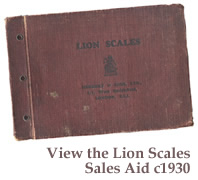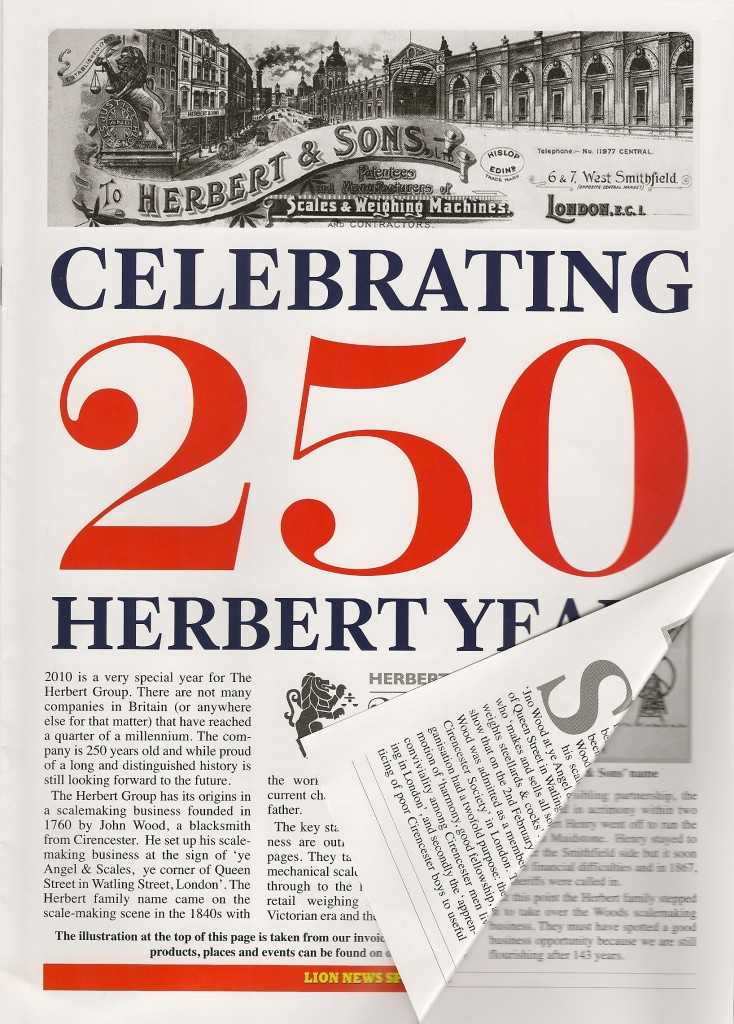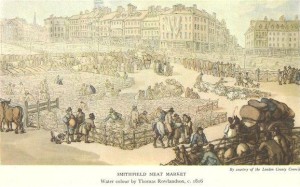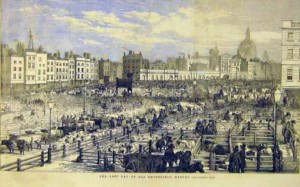London, Smithfield MarketThe drawing at the top of the home page is adapted from the Herbert & Sons letterhead of around 1910, and shows 6&7 West Smithfield in relation to the Smithfield Market buildings. In the far background can be seen the spires of St. Andrew Holborn (right) and the City Temple (left).
The drawing also conveniently places the Lion trademark partially over the premises of a competitor Thomas Williams at No 8 West Smithfield.
With excellent timing, Thomas Herbert had purchased the Wood business on 30th December 1867, as the new Smithfield Market was commissioned in 1866 and completed in November 1868. Designed by City Architect Sir Horace Jones at a cost of £993,816, the buildings were built above railway lines which had newly connected London to every other part of the country, enabling meat to be delivered directly to the market.
In 1838 the former live market had been described thus in Charles Dickens ‘Oliver Twist’:
'It was market morning. The ground was covered nearly ankle deep with filth and mire; and a thick steam perpetually rising from the reeking bodies of the cattle, and mingling with the fog, which seemed to rest upon the chimney tops, hung heavily above ... Countrymen, butchers, drovers, hawkers, boys , thieves, idlers, and vagabonds of every low grade, were mingled together in a dense mass: the whistling of drovers, the barking of dogs, the bellowing and plunging of beasts, the bleating of sheep, and the grunting and squealing of pigs; the cries of hawkers, the shouts, oaths, and quarrelling on all sides, the ringing of bells, and the roar of voices that issued from every public house; the crowding, pushing, driving, beating, whooping and yelling; the hideous and discordant din that resounded from every corner of the market; and the unwashed, unshaven, squalid, and dirty figures constantly running to and fro, and bursting in and out of the throng, rendered it a stunning and bewildering scene which quite confused the senses.’
The Smithfield Market Removal Act was passed in 1852 and the live cattle market was relocated to a new site at Copenhagen Fields in Islington.
In 1860 the City of London obtained an Act of Parliament (The Metropolitan Meat and Poultry Market Act of 1860), allowing the construction of new buildings on the Smithfield site. Work began in 1866 on the two main sections of the market, the East and West Buildings. Extensions were built later -The Poultry Market, opened in 1875 [destroyed by a major fire in 1958 and replaced by the current building in 1962], the General Market in 1883 [partially destroyed by a V2 rocket on 8th March 1945] and the Annexe Market in 1888.
|
Click on the Image(s) For Detail |






